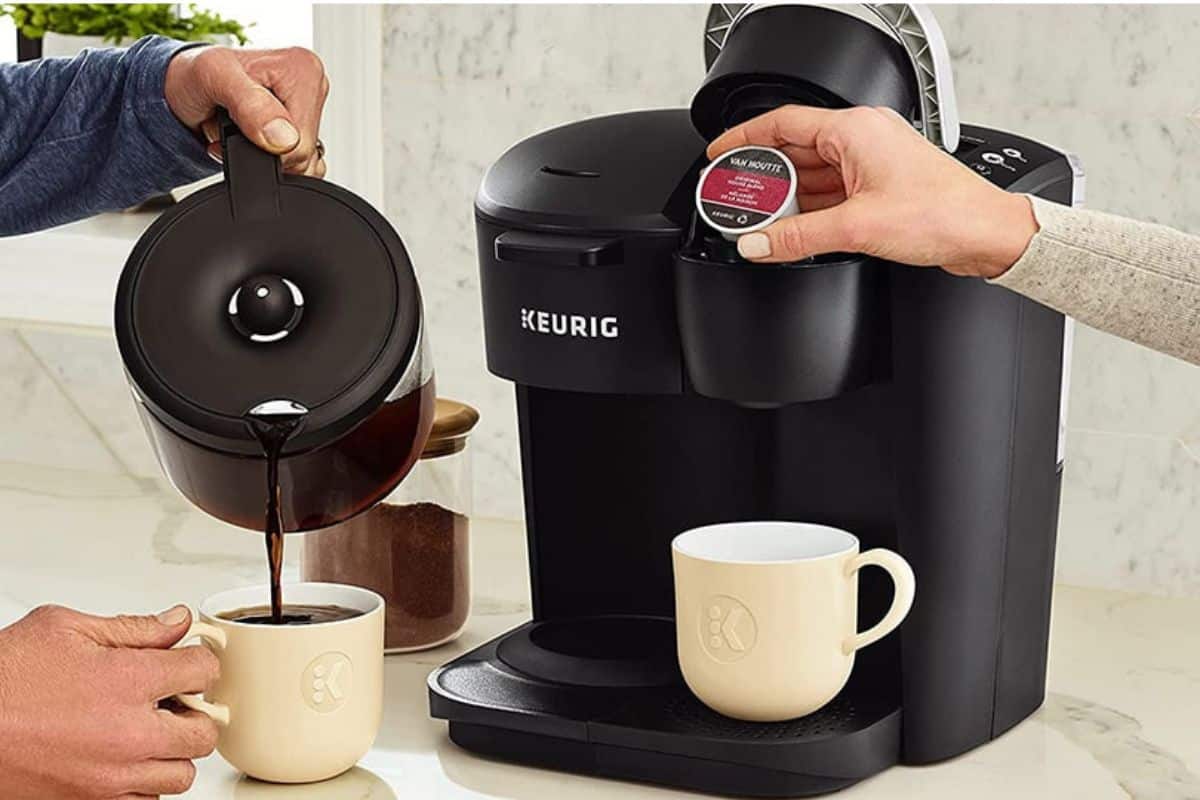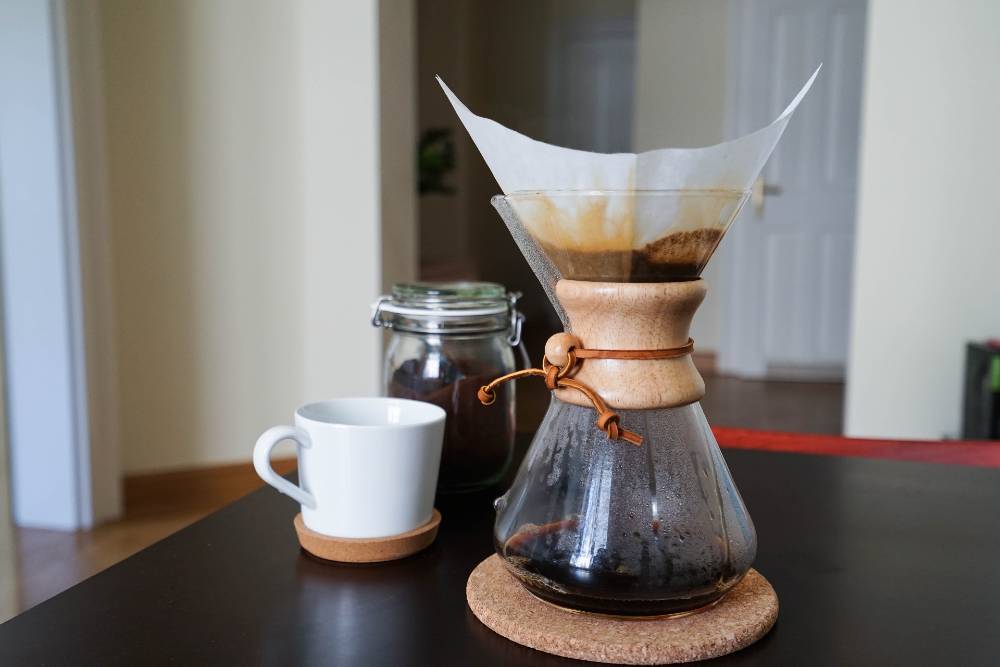Great coffee comes in many different forms. Although it’s easy enough to order a latte or americano from your local coffee shop, when you’re used to barista-quality coffee it can be a steep learning curve to move on to home-brew coffee.
If you want to take a step up from the French press and start brewing espresso-like coffee at home, by far the cheapest and easiest method of doing this is to use a Moka pot. This coffee maker, designed in Italy by the engineer Alfonso Bialetti makes a truly rich and dark brew that can rival any espresso.
As with most coffee makers, if you use a Moka pot wrong then you’ll be set for disappointment. To get the very best out of your brew here’s a complete guide to using your Moka pot. From the coffee you choose to the brew method, it’s all here to keep you on track!
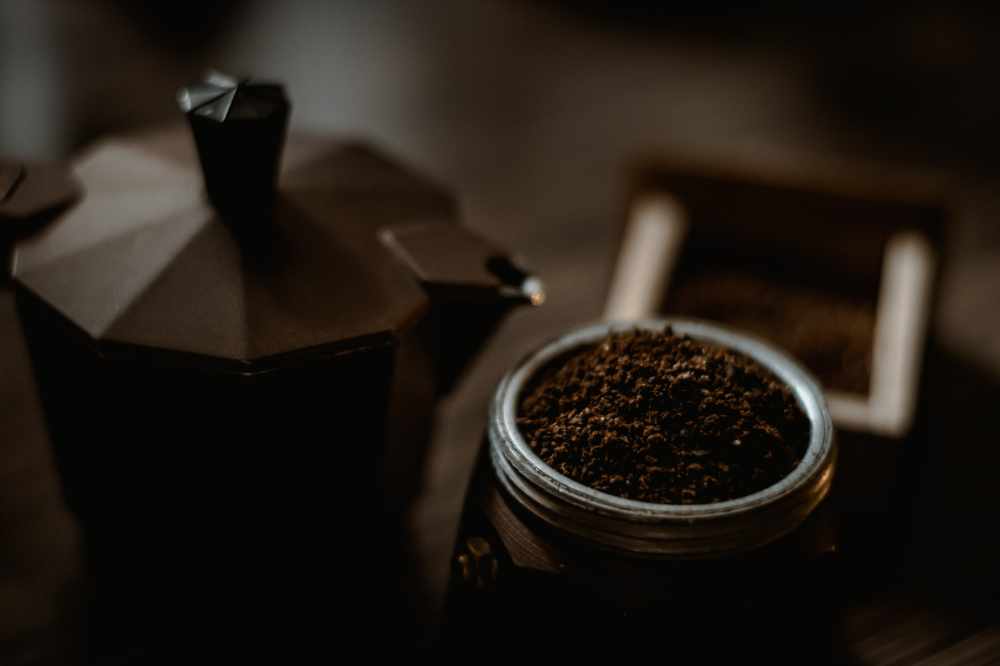
The Moka Pot (Stovetop Espresso Maker)
The Moka pot is an Italian stovetop coffee maker that makes very strong dark coffee. The first example of this coffee maker dates back to the 1930s where Italian engineer Alfonso Bialetti first developed one as a means to brew coffee shop, strong coffee in your home at an affordable price. The device has three compartments, one for the water, one for the ground coffee, and a top chamber where the brewed coffee is delivered via a spout.
When you place the Moka pot on the stove the water heats up and the steam creates pressure that forces the water up through the coffee grounds to brew the coffee in the upper chamber. The Bialetti Moka Pot is a traditional Italian brand that has the iconic design most people are familiar with. The design of the Moka Express is supposedly based on art deco architecture and women’s skirts in the 1930s. It’s a piece of art in itself and makes for a great kitchen display piece as well as a coffee maker.
The pot itself is traditionally made of aluminum but there are stainless steel models on sale as well these days. They feature a rubber gasket to help seal the chambers to create pressure and a safety valve can be located on the lower chamber. This regulates the brewing pressure to make it optimal and prevents too much pressure from causing damage to the device.
Is It Real Espresso?
Although the Moka pot is called a stovetop espresso maker, the coffee it brews isn’t actually true espresso. An espresso machine should reach around 9 bars of pressure to create that thick crema that characterizes a true espresso and the Moka pot can only manage 1.5 bars.
Because the Moka pot uses steam pressure to create a pressurized environment, this means that the hot water is boiling rather than the optimal 195-205F temperature that an espresso machine works at. This can create a bitter brew if the Moka pot isn’t handled with care.
Espresso is intense in flavor with a wide range of coffee tastes flourishing. It’s sweet and rich and has the texture of warm honey or syrup. It should have a thick layer of emulsified fats floating on the surface which constitutes the crema. This is caused by the high pressure when brewing the coffee.
The Moka pot produces a very strong coffee that doesn’t contain the depth of flavor an espresso does. It’s dark and intense but is more similar to a very strong drip coffee rather than espresso. It’s thicker in texture when compared to regular coffee but not as viscous as an espresso. There’s unlikely to be much crema if any at all due to the lower pressure extraction.
Moka pot coffee can still be enjoyed as an espresso-like cup of coffee or you can add steamed milk to make a latte or cappuccino.
The Coffee
The first thing you need to consider when you set out to make Moka pot coffee is the kind of coffee you’re going to choose.
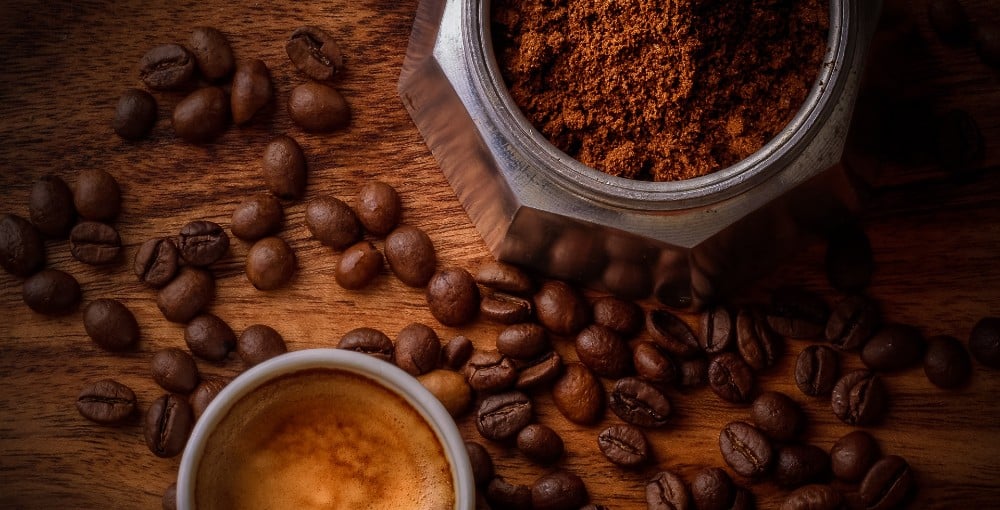
Whole Bean Vs Pre Ground
It’s always best to opt for whole coffee beans as coffee loses a lot of flavor and aroma quite quickly once it’s ground up. To get the most flavor out of your coffee, buy whole beans, ideally freshly roasted from a local coffee roaster.
Type Of Coffee
A darker or medium roast is better suited to the Moka pot due to its strong single-note flavors and more oily texture. The bean origins come down to personal preference and which varieties suit the darker roasting process.
If possible, opt for freshly roasted coffee beans from a local roaster. The fresher the beans the better the coffee will taste and the longer coffee sits after roasting the more flavors and aromas are lost. Some roasters will grind your coffee to the perfect grind size for your brew method so if you don’t have a coffee grinder at home this can be really helpful.
How Much Coffee
The amount of coffee you add to your Moka pot depends on the size of the pot. For a 4 cup, Bialetti Moka pot, you will need about 15-17 grams of coffee to fill the filter basket. A 6 cup Moka pot will need around 20-22g. You want the basket to be full of coffee that’s loosely packed in, not tamped down. Use your finger or a spoon to level out the surface of the basket after you have added your coffee.
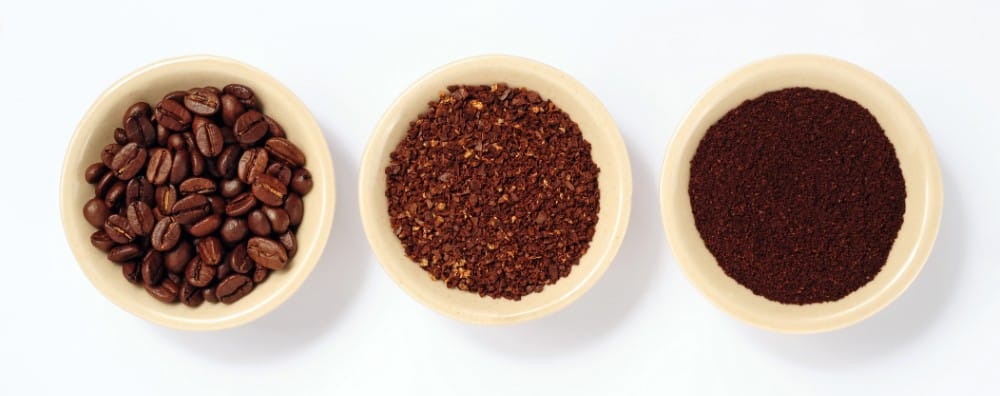
Grind Size
The Moka pot needs a medium-fine grind of coffee, similar to drip coffee. It should have roughly the consistency of table salt. It’s best to use a burr coffee grinder to grind up coffee beans as these ensure a consistent particle size throughout the coffee. Blade grinders are much cheaper but they chop the beans up unevenly and can heat up when they spin causing the coffee to burn before you’ve even brewed a cup.
Heat Source
To make coffee in a Moka pot you will need a heat source. An electric or gas stovetop does well but you can always use an open flame or campfire to make coffee in the great outdoors. These coffee makers don’t work with induction cooktops.
Just be wary of the plastic handle on the pot and make sure it isn’t exposed to too much heat as it can melt!
Step-By-Step Procedure
Now you have your coffee and your pot ready, let’s look into exactly what to do to get the very best coffee out of your Moka pot.
Start with the lower chamber. Typically this is filled with cold water then placed over the heat. I have found that this can impart a metallic taste to your coffee and this is much reduced if you use pre-heated water. Boil the kettle and then add the water to the bottom chamber of the pot, filling it to just below the pressure release valve.
Next, place the filter basket on top and add your coffee grounds. Don’t tamp them down, simply fill the basket and use your finger or a spoon to gently level the surface.
The bottom chamber will be pretty hot at this point so use a tea towel or oven mitts to screw the top chamber in place. The rubber gasket should create an airtight seal between the two parts.
Place the pot over a medium heat-low heat and wait with the top open so you can keep an eye on the brewing process.
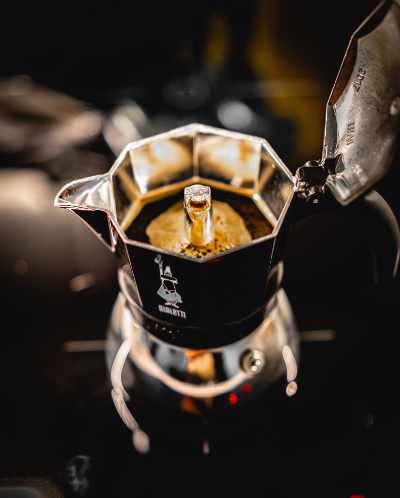
When it starts to hiss and emit a thick cloud of steam you know it’s nearly there. The coffee should start to bubble and ooze out of the spout. If it’s spitting a lot at this stage you can close the lid to keep it tidy.
Once the upper chamber is full and the coffee is no longer oozing out the spout, remove the pot from the heat source and run it under cold water. This quickly cools the stainless steel pot and helps further prevent that metallic taste from ending up in the coffee.
Serve the coffee in shots to be enjoyed as an espresso, topped up with hot water to give an americano, or with steamed milk to give a latte or other specialty coffee.
Similar Brew Methods
Aeropress
An Aeropress is a more modern means for brewing espresso-like coffee at home and on a low budget. It’s a plastic device, a bit like a large syringe that creates a small amount of pressure to help brew the coffee. The resultant coffee is similar to a Moka pot, it’s thick and intense but generally less bitter as the water doesn’t get as hot as it can with the Moka pot.
They are inexpensive to buy, simple to use, lightweight, and very portable so great for brewing coffee at work or on the go.
Percolator
A coffee percolator is a means of brewing coffee that continually boils water up through the coffee grounds to create a very dark brew in large batches, perfect for meetings or events. The coffee brewed in a percolator can often end up bitter if care is not taken as the water can burn the beans.
Espresso
Of course, we can’t ignore the true espresso when it comes to rich, dark coffee. Espresso machines come in a huge variety of shapes and sizes and range from fully hands-on with the manual machines to simply pressing a button for the super-automatic espresso makers.
The one thing all these machines have in common is the ability to create a high-pressure brewing environment by using specially designed levers and pumps. This is what drives the price up as these components are not cheap to manufacture.
Final Thoughts
The Moka pot is an easy-to-use, simple solution to making rich, dark coffee at home. It takes a bit of practice to get the coffee perfect but once you manage it you’ll never look back. Just make sure you use good quality coffee and take care as you brew and you’ll be enjoying the most delicious cup of java in no time.



